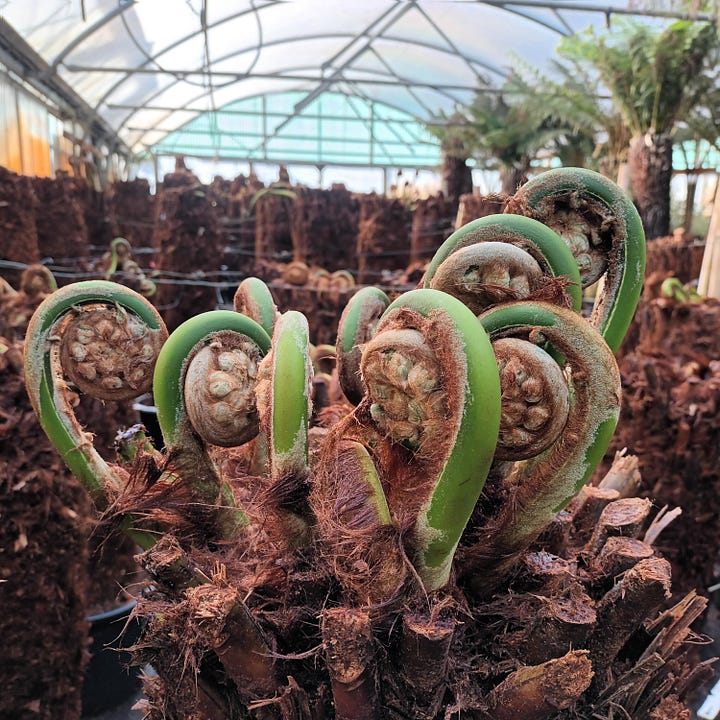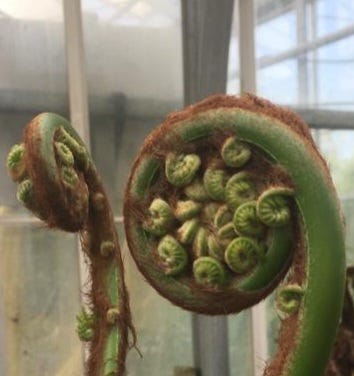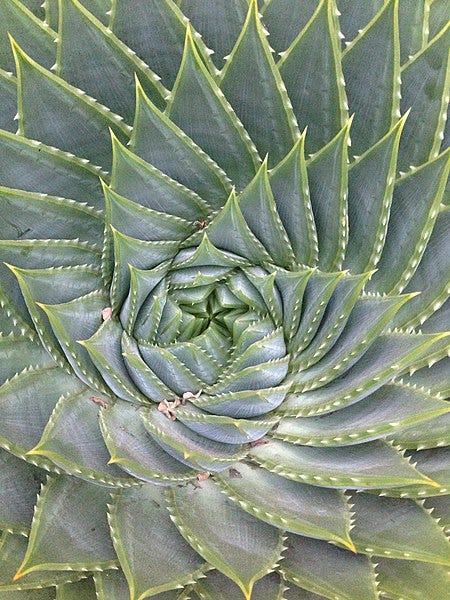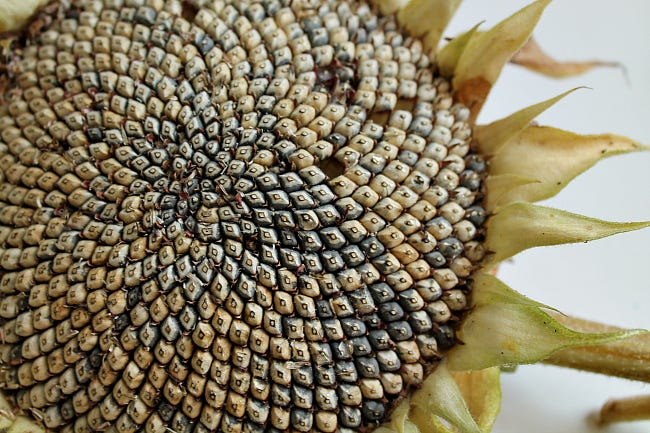Tree Fern Mathematics
Last Sunday, I came into work to find that the tree ferns had been delivered. Hailing from Tasmania, the tree fern (Dicksonia antarctica is the somewhat unromantic Latin name) looks like something the dinosaurs might have known. Each plant consists of a wide, woody, stump-like ‘trunk,’ above which fronds whorl out in spirals to make an arching canopy of beautiful light green. In summer, it’s like stepping through a rainforest.
When we take delivery of the ferns, they’re in a semi-dormant state, and at a glance, they look just like huge, rough, reddish-brown logs. Heaving them about - and they take some heaving, with a five or six-foot tree weighing at least as much as an adult man - you notice they’ve been sawn off at top and bottom.
It seems like a miracle that something treated so roughly can recuperate, but the trunks of tree ferns are actually dead material, laid down as the plant grows. This material forms a structure that supports the living root as it grows from beneath the base of the fronds, down to the soil. So it can take so hacking about around the edges. More remarkable is the delicacy of the fronds as they unfurl, starting with nubbly rounded horns covered in long, dark, deer-like hair. After this, intersecting loops of green circle out, forming an open shape like the crown on a chess king. These coiled loops are called fiddleheads, and each one bursts into multiple mini-spirals, each one tucked into the curve of the next.


Famously, these unfurling fiddleheads are one of the many examples found in nature of the mathematical pattern known as the Fibonacci sequence. Named for the thirteenth-century Italian, Leonardo of Pisa, the sequence actually dates back to at least 200 BC and to the Indian mathematicians. In this sequence, each number is calculated by adding its two immediate predecessors, beginning with 1, 1, 2, 3, 5, 8, 13, 21, 34, and so on.
The longer you keep calculating the numbers in the sequence, the closer the ratio between each pair of numbers comes to another important mathematical concept: the ‘golden ratio’: a ratio between two numbers that was thought to represent the most beautiful and natural proportions. The Fibonacci spiral and the golden ratio describe growth patterns all through the natural world, from the whorls of snail shells and the interlocking spirals of sunflower seeds, to the the fat, furled centres of succulents.


But it’s not just a matter of aesthetics. Because the spiral pattern doesn’t repeat in a neat, predictable way - because it increases in irregular, ever-larger loops - each of the unfurling fronds is offset just slightly from all the rest: none sits directly underneath another. In fact, the pattern is so irregular, it optimises the amount of growth the plant can produce, without each uncurling frond blocking the others’ access to light and water. This in turn allows the fern to pack an astonishing number of fronds into each tightly coiled fiddlehead, ready to burst into life as soon as spring arrives.
In the UK, Tree ferns can be planted outside, but they do need protection in winter - stuffing the crown with straw, for example - and they do need to be kept wet. We soak ours from the crown down on a regular basis - daily in summer - and they look absolutely amazing.
Check us out on Instagram: https://www.instagram.com/vertigrowplant/
Vertigrow Plant Nurseries, Lawnswood House, Malton Road, York, YO32 9TL






